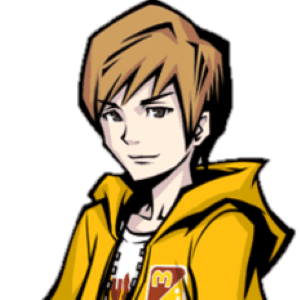If there’s one sentiment that I think best describes the weight of this entry in the Trails series’ western release, it would have to be “culmination”. This might be an odd statement since Trails of Cold Steel VI is also available for purchase and more directly delivers on the idea of threads from many narratives converging on a singular point, however to me at least today’s title embodies this concept more so on a meta level. Ever since Xseed’s fateful decision to skip the Crossbell arc in publishing the Trails series, the duology’s absence has hung heavy over the western fanbase as a demand which desperately needed to be met, but seemingly may never have gone fulfilled. And yet here we are today: every story of the first half of the series is finally available, and the sense of completeness that comes with it is a bit hard to put into words. Nevertheless allow me to reflect on the 45 hour journey I took to bring the other 355 hours into their full perspective.
… Yes, you heard that right. If you tried to beat the entire series in one sitting it would take you two and a half weeks.
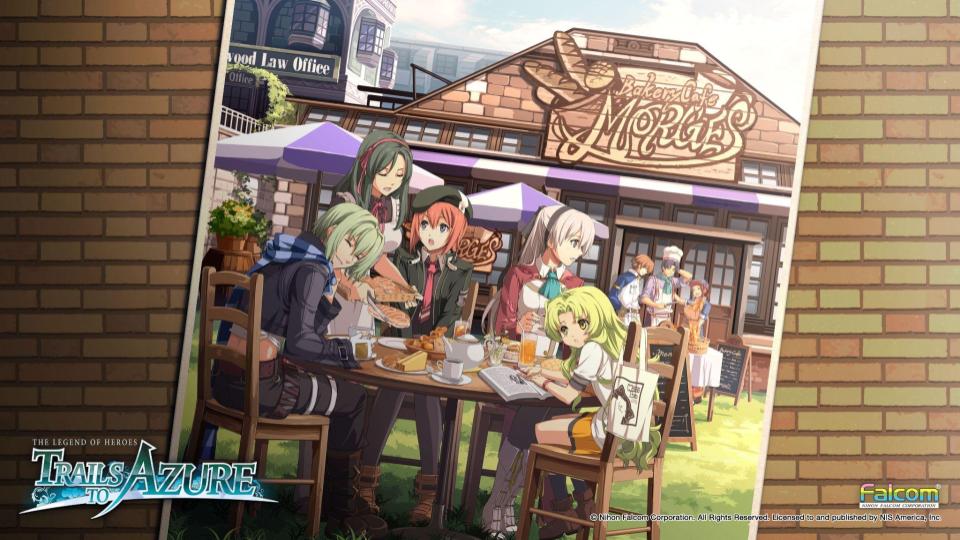
Developed by Nihon Falcom, published globally by NIS America, and released March 14th of 2022, The Legend of Heroes: Trails to Azure is an anime role playing game for Nintendo Switch, Playstation 4, and Steam. Its premise involves a familiar cadre of specialist police officers serving the people of their city-state as its political affairs begin to garner international attention. Players interact with the game through world exploration, turn-based combat, party customization, and an absolutely hilarious amount of reading. Please note that I played the Steam version and that differences may exist between the releases. Also this article will contain spoilers for Trails from Zero where necessary (and much sooner than you think).
Regarding the game’s place in the overall Trails series, Azure is the fifth installment. It takes place after Trails from Zero, and overlaps heavily with Trails of Cold Steel I and II on the timeline. In fact the versions of the Crossbell games that the west received are based upon re-releases in Japan that feature characters which the Cold Steel games always implied were in Crossbell during certain events but weren’t in the original versions. For instance, though I never came across her myself, you can encounter Juna Crawford at the police academy if you visit at certain times, who is one of Cold Steel III and IV’s principal characters. In any case, don’t let the lack of the number II fool you: Trails to Azure is about as direct a sequel to Zero as you can get, and I strongly advise against playing it without playing the preceding title first. Thankfully Zero is an excellent game and is objectively the best in the series, so if you’re worried about the extra time and money you’ll need to put down to play Azure I promise you that it’s well worth the investment on its own.
The game takes place in the city-state of Crossbell roughly two months after its predecessor and once again follows Lloyd Bannings, a detective working for the Crossbell Police’s Special Support Section. The game’s prologue features him and his new teammate Noel Seeker working together with the Bracer Guild and the First Division to catch the remaining fugitive of the D∴G Cult. Afterwards they return to the city and meet up with the rest of the SSS, also now including former gang member Wazy Hemisphere, and officially resume operations after having split up to take care of business following Crossbell’s Longest Day. From there the plot mostly follows their police work and their anticipation of the Western Zemuria Trade Conference, but it’s difficult to say much more without delving into spoiler territory.
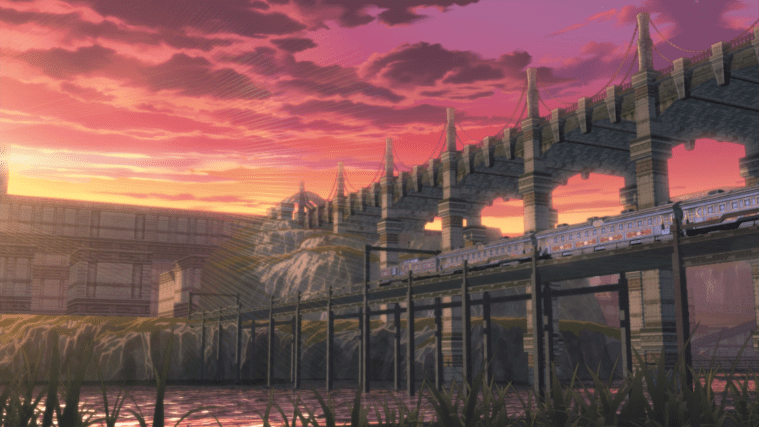
Of all the stories on offer by the Trails series, Azure’s represents the most polarizing experience by a long shot. On one hand, chapters one and two are brutally slow in their pacing, and while important stuff you need to know certainly happens in them it can be very frustrating to sit through. This is of course compounded by the fact that the game once again falls back on the series’ worst habit of filling time with incredibly pointless raunchy humor that is very uncomfortable to read. Randy Orlando certainly brought a bit of this in Zero, but it was balanced out decently by characters with other things on the mind. Not so in Azure, as Randy and Wazy combined made for a constant stream of risque dialogue that brings me back to some of Cold Steel III’s most awful sections. The Trade Conference itself was a breather but it also relied pretty heavily on Sky trilogy fanservice (which is to say it drags itself out a little parading around older characters for nostalgia’s sake), and any serious repercussions of the event are immediately undercut by the story transitioning to a downtime chapter featuring a visit to a beach resort filled with unbearable amounts of sexual pandering. It is only at chapter three when the game’s story actually starts to get really good, and if I recall correctly this was about 17-20 hours into the game. If the significance of this number is lost on you let me put it this way: in the same amount of time it takes for Trails to Azure’s story to get truly good, you can play through most of, if not the entirety of, Trails in the Sky the 3rd’s incredible main story. Easily one of the worst set of early chapters in the whole series.
What’s truly odd though, is that after all that you’d think the rest of the game’s narrative wouldn’t make up for this grievous affront. However, chapters three, four, and the finale offer some of the most exciting, shocking, and heartfelt stories of the entire series. The stakes are among the highest they’ve ever been, nothing and no one is exactly who they seemed to be, and yet every new revelation feels effortlessly woven into all the delicate worldbuilding this duology has been crafting. They even take the time to explain stuff you would have thought was just a quirk of the way the story was told, and the payoff is incredible. Literally my only complaint is that the protagonists resolve their relationship to one of their foes by championing the idea that “justice has no set definition”, a patently stupid idea which makes the SSS sound like total hypocrites when you really break down the implications of that statement, but when that’s my only real complaint it’s hard to argue that Falcom haven’t accomplished something truly special with this one. It pains me that I can’t say much about it in detail but I promise that there is a great story here, you just have to wait for it. So in summary, the story of Trails to Azure unfortunately forces the player to sit through some terribly paced sections filled with its worst tendencies before it hits its stride, but when that stride comes it is an impossible tale to put down.
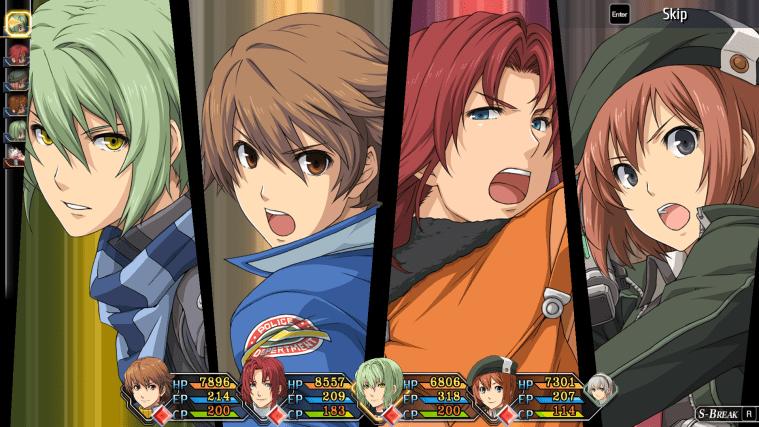
As for the gameplay side of things, the combat is basically identical to the previous entry. If you’ve read that article, you’d know about the game’s grid-based positional combat that emphasizes using different attacks depending on available resources and character positioning. Max advantage against overworld fights is still way too powerful but admittedly toned back somewhat, and the balance between physical and arts based team builds is really good. The actual major change in the combat came from character customization. Aside from the Enigma II orbment units having the same unlock and upgrade system as Zero, Azure turns out to be the true origin of the Master Quartz system I came to know from the more modern entries. They work basically the same as in the Cold Steel quadrilogy in providing stats and passives, except since art loadouts are determined by the sepith values in the orbment lines, the Master Quartz give a noticeable boost to the value of specific elements across all lines. This was the most satisfying part of the customization system, as at the beginning of the game it gently nudged Lloyd, Noel, Ellie, and Wazy towards equipping certain Master Quartz, but I took the liberty of swapping their loadouts around a bit and the resulting builds were loads of fun. The once arts-focused Ellie was suddenly a speedy gunslinger, and the role of arts specialist went to Wazy despite his close-range martial arts. It reminded me how much I enjoyed this soft class system, and am glad it became the future of the series’ customization. The combat as a whole is definitely still a bit too easy, but I managed to have fun with it.
As for exploration, Trails to Azure follows tradition as a direct sequel which mostly covers the same grounds as its predecessor, with only dungeons serving the purpose of being new areas to explore. The repetition that follows from this was definitely a factor in why the early game felt so slow, but on the whole Crossbell is still a great setting which I enjoyed seeing new nooks and crannies of. The exploration was certainly spiced up for me in an unexpected way, as a particular character from a previous title moves into a specific area of the city, and I liked running back over there often to see what she was up to. This even led to a scenario where I couldn’t find her anywhere so I had to talk to various people while retracing her steps to figure out what became of her that day, almost like a self-made side quest where the narrative was the reward. Speaking of, the side quests in the game are made further convenient since the Special Support Section gains access to a car that lets them travel quickly to areas normally requiring a highway hike, so there really isn’t much reason to not tackle as many as you can. Overall the exploration wasn’t anything to write home about by itself, but some elements of familiar investment made it pretty worthwhile.
In the graphics department things look pretty much identical to Trails from Zero, however I loved the presentation in that game so naturally I loved it here too. Really nothing to say here except reiterating that this is what happens when you embrace fixed camera angles to create beautiful shots, which a person wiggling around camera controls would never get. Musically speaking, I am happy to say that Trails to Azure wound up being a hit with me. Granted it does fade into the background a little at times, but for the most part tracks stuck out much more often and there is some great stuff here. As usual most of the game’s best music comes much later in the adventure like with Mystic Core, but for me some of the pieces setting the mood for the game’s heavier scenes were also big standouts. Also it uses the super arrange version of Inevitable Struggle for some of the climatic boss fights, and that’s Falcom’s musical magnum opus so you know it deserves full marks.
Lastly there is what we can reflect on with this game as Catholics. If there is one theme that runs strongest through the narrative of Trails to Azure, it would be the concept of control. On just about every front, the problems that arise in the story stem from characters wishing they could control something they do not currently. Crossbell State naturally represents this as a buffer state which both of its immediate neighbors desire to annex, but there are also characters who seek the power to change the unchangeable like the past or reality itself. While it’s certainly fine to pursue a degree of ownership and control in one’s life insofar as one takes responsibility for themselves, Trails to Azure serves as a strong reminder that not everything can nor should be under our perfect control, for even if methods to control the uncontrollable existed their price would assuredly be too high. In the same vein we must strive as Christians to recognize that in our fallibility we are not capable of having control of everything that happens, and this can be very painful. But if we know that God governs the world with justice, then we need not grasp for power for ourselves when He will lead all to its rightful conclusion. Some things in this world are God’s domain alone to change, but instead of raging against what we cannot do let us instead strive to make good change in those tasks He does entrust us with. There’d certainly be no shortage of work to be done either way.
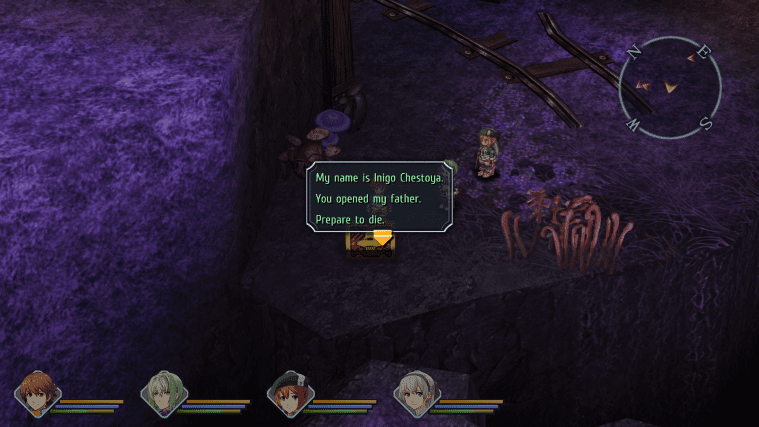
In conclusion, Trails to Azure more than any other Trails game feels a lot like more of the same when compared to its immediate predecessor, however if you’re going to copy homework you might as well take from the best of the best. There are unfortunately a number of pacing issues that keep it from taking the crown, but the back half of the game on its own makes it worthy of the top three in the series. If you enjoyed the first half of the Crossbell duology and want to see where Lloyd’s quest for truth ultimately leads, then this comes as an easy recommendation. If you can endure a rather rocky start, Azure delivers an RPG experience you can hardly get anywhere else.
Scoring: 80%
Gameplay: 4/5
Story: 4/5
Art and Graphics: 5/5
Music: 5/5
Replayability: 3/5
Morality/Parental Warnings
Trails to Azure features several elements of the supernatural in its setting. The arts attacks used by the characters lean closer to technology than out and out magic, but many of their effects are relatively indistinguishable from magic. It doesn’t help that the Time element attacks will be themed around attacking the enemy with demonesque entities. The game also features twists more broadly where technological advancements are coverups for mystic rituals. The in-universe faith is a fictitious one centered around veneration of a goddess, though there are markedly Christian inspirations in their aesthetics and attitudes. Not every member of the church is especially upstanding, although I didn’t find this to be a bad thing per se. The demon drug Gnosis also makes a return from Zero. Once again monsters range anywhere to plushie-made designs to weird demon looking things.
Battles involve a variety of melee weapons, guns, and orbal arts, but doesn’t often lead to blood. There is one story scene that does involve blood which does get pretty brutal. Character design is sensible for the most part, however any pretenses of modesty in the game is thrown out with a beach trip which explicitly gives the player time to stare at the main cast in extremely sexual swimsuits. This problem extends to a few of the normal outfits too, notably Shirley Orlando who is also a 15-year old. Randy Orlando and Wazy Hemisphere have a tendency to inject sexual tension into conversations that otherwise really didn’t need it (and Wazy sometimes plays up his androgynous appearance to uncomfortable effect), and Shirley and Ilya Platiere openly talk about their desire to touch other women’s bodies (groping is also shown at least twice). Foul language is decently common in the game’s script.
If you enjoyed this or any other Catholic Game Reviews article, do consider becoming a dedicated supporter over on Patreon. For a small monthly donation, you can receive official CGR stickers, request games for us to review twice a year, and gain access to a special channel of our official Discord where you can interact with our whole writing staff. But more importantly, for every dollar you donate I start another battle at Max Advantage! (Note: Monetary donations may not actually affect reviewers’ gameplay performance) Regardless of whether you choose to help out or not, thank you everyone for your continued readership, it means very much to all of us.
